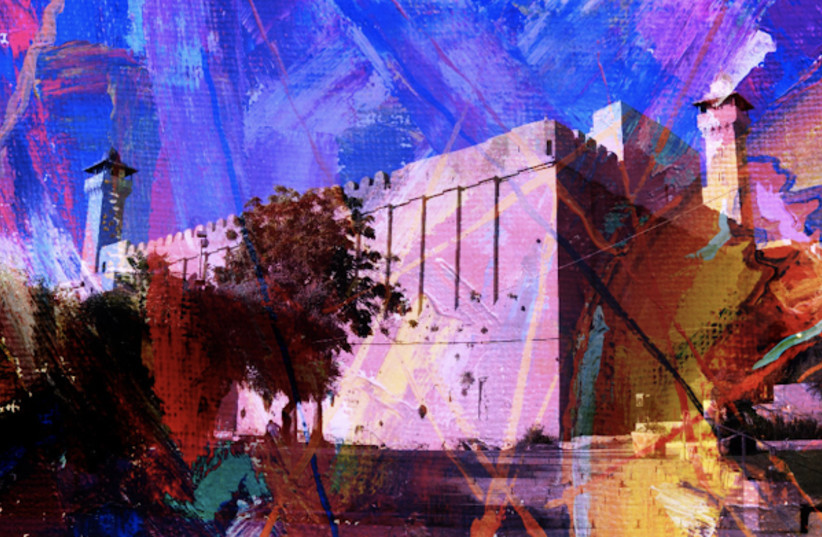NEW YORK – NFTs continue to be a source of fascination for artists, athletes, celebrities, brands and collectors. And for techie hassidim.
For the uninitiated, NFTs – or non-fungible tokens – are blockchain-based certificates tied to digital or physical collectibles. “Non-fungible,” more or less, means that something is unique and can’t be replaced with something else, like a one-of-a-kind baseball card. NFTs can be anything digital, such as drawings, music… and a Torah.
“I asked some people who are very into NFTs to work together on a project. We would sell digital Torahs to fund the creation of actual Torah scrolls,” Rabbi Mordechai Lightstone said. Lightstone is a Brooklyn-based Chabad rabbi who directs social media for Chabad.org and is the founder of Tech Tribe, a community for Jewish people in technology and digital media.
NFTs have become a bit of a flashpoint online, with some anointing them as the next phase of the Internet, while others see them as a passing fad.
“We don’t want to be zeitgeist-y and of the minute and certainly didn’t want to do a quick cash grab – a spiritual cash grab as it were. We want to find a way to use the technology on a physical and spiritual plane. Writing a real Torah scroll, funded by NFTs, touched all those different points,” Lightstone said.

Lightstone worked with a fellow tech-savvy rabbi, Jerusalem-based Jonathan Caras, on the NFTorah project. Caras’s own brother is Michael Caras, known as the “Bitcoin Rabbi.”
The NFTorah project began with a series of commissioned artworks, each representing a portion (or chapter) of the Torah. But now, the focus is on creating NFTs tied to individual letters in a handwritten Torah scroll.
For years, there have been programs for religious Jews to purchase and “own” a single letter in a physical Torah. Now, the concept has gone digital.
“We’re just using the current technology to bring awareness to it, to show uniqueness. There’s a message here, right? Every letter in the Torah is unique – even one alef is different from another alef. It’s just like the idea of crypto. It creates uniqueness in the digital space. Every mitzvah is unique, every soul is unique and it drives that message home,” said Lightstone, who also introduced an NFT menorah this Hanukkah.
Unsurprisingly, there’s some confusion in the Jewish community about NFTs in general, and about what kind of hechsher (rabbinical certification) they carry.
“There are misunderstandings. There are people who think if you’re trying to make a digital Torah scroll, it’s not kosher. If you’re trying to light a digital menorah, it doesn’t fulfill the mitzvah. They haven’t quite grasped the concept that we aren’t substituting one for the other. The primary target for us has not been the NFT skeptical – those who are confused by the tech and some who are against it for various, valid reasons. But there are many young people and people in general who are interested in this technology and intrigued by it, even if they don’t fully get it, and we really were primarily going after that market,” Lightstone said.
His Tech Tribe, run with his wife, Chana, is an affiliate of Chabad Young Professionals. It essentially runs as a hi-tech Chabad House, and welcomes all within the Jewish community, regardless of level of observance.
Their flagship event is an open Shabbat dinner at the annual SXSW Interactive in Austin. The community also hosts holiday parties in New York, and creates experiences like 3D-printed dreidel design competitions.
“We’re currently expanding our headquarter space in Brooklyn. It’s environmentally-friendly, with smart lights and eucalyptus wood. Much of our focus is on that. We’re also getting ready for SXSW, though the details are in flux because of the pandemic. But, that event usually draws 300-400 people every year. Our Hanukkah party had about 75 people,” said Lightstone.
Of course, it may seem strange to some to see a black-hatted hassid leading the next generation of Jewish techies. Lightstone, a disciple of the late Chabad Rebbe, Menachem Mendel Schneerson, said that Schneerson never shied away from technology, but embraced it.
“Our sages have said: ‘All that God created was created for His honor.’ This applies also to all the scientific discoveries of recent years. Their purpose is to add honor to God by using them for holiness, Torah and mitzvot,” Schneerson, who was known to embrace the tech of the time, commented.
“The Rebbe saw technology as the ultimate expression of godliness in this world. We’re trying to tap into that message. We’re exploring and keeping apprised of the technology and trying to find new and innovative ways to use tech for its true purpose,” said Lightstone.
